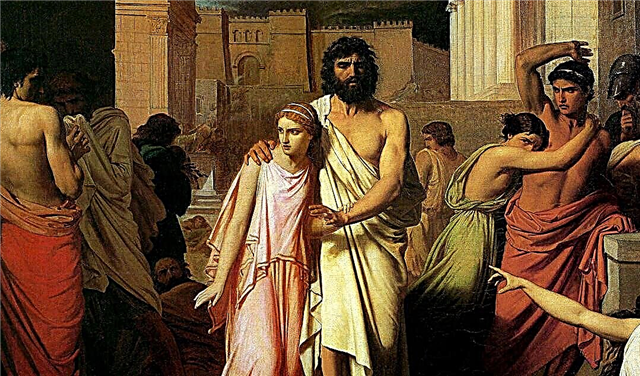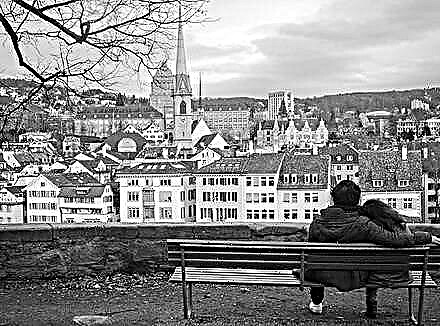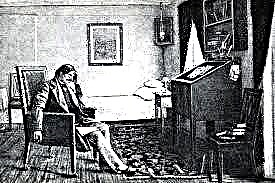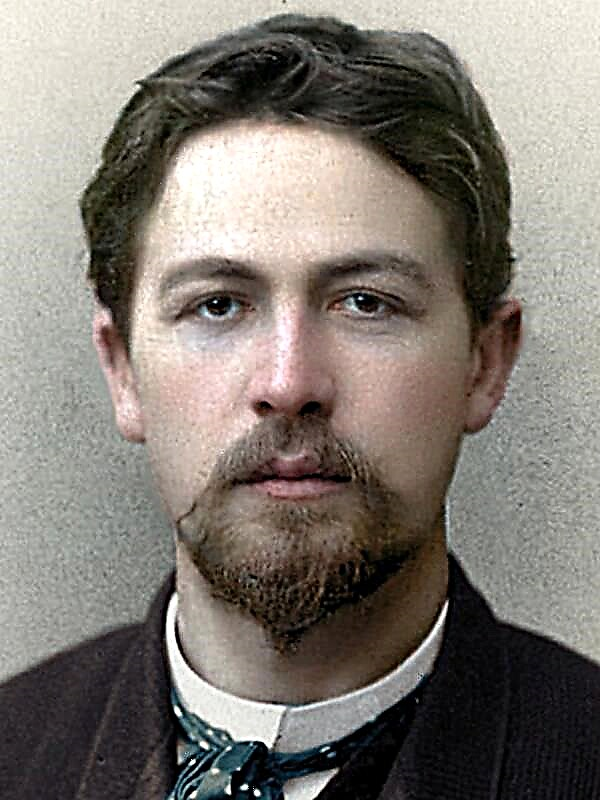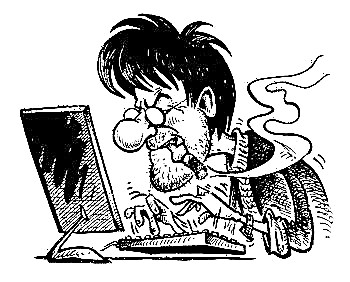(510 words) Alexander Sergeevich became a symbol of his time. But the portraits of the great poet, unfortunately, are not so many. They are all different. Each artist saw him in his own way. According to the memoirs of contemporaries, the author himself was a very controversial person.
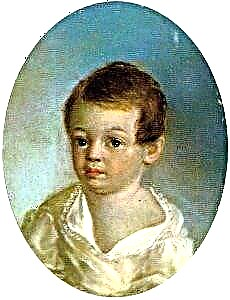 Xavier de Mestre - «Pushkin is a child ”(1801-1802). The Count and artist Francois Xavier de Mestre taught the poet's older sister, Olga, for some period of time. He is the author of a miniature painted in oil on a metal plate. The image was very lively. The exact date of creation is unknown. It is assumed that this is the first image of Alexander Sergeyevich. For a long time, there was debate about who is still depicted in miniature and who is the author. For more than 100 years it was kept by the family of a friend and doctor Pushkin, the Greater Poland, and from 1950 to 1961, he was the performer of the role of pita in the production of "Pushkin" by Andrey Globa, Vsevolod Yakut.
Xavier de Mestre - «Pushkin is a child ”(1801-1802). The Count and artist Francois Xavier de Mestre taught the poet's older sister, Olga, for some period of time. He is the author of a miniature painted in oil on a metal plate. The image was very lively. The exact date of creation is unknown. It is assumed that this is the first image of Alexander Sergeyevich. For a long time, there was debate about who is still depicted in miniature and who is the author. For more than 100 years it was kept by the family of a friend and doctor Pushkin, the Greater Poland, and from 1950 to 1961, he was the performer of the role of pita in the production of "Pushkin" by Andrey Globa, Vsevolod Yakut.Sergei Chirikov - portrait of Pushkin (1810). Sergei Gavrilovich Chirikov, whose brush belongs to the image of the great creator painted with watercolors, taught the basics of painting and was a tutor. Characterized Alexander Sergeyevich as frivolous, childish, sloppy, carefree person. Nevertheless, in his opinion, the future poet was a kind, diligent, gallant man.
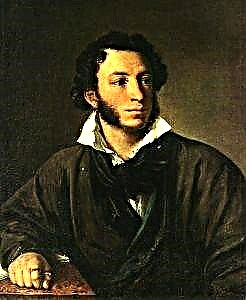 Vasily Tropinin - Portrait of A.S. Pushkin (1827). One of the most famous portraits of the poet. He personally ordered the image of Tropinin as a gift to friends. Alexander Sergeyevich is depicted with a slightly disheveled haircut, in a dressing gown, blanche shirt, a resin shawl slid around the circumference of the collar. This portrait is made in the spirit of romanticism, that is how fashionable young people of that time wanted to appear before their descendants.
Vasily Tropinin - Portrait of A.S. Pushkin (1827). One of the most famous portraits of the poet. He personally ordered the image of Tropinin as a gift to friends. Alexander Sergeyevich is depicted with a slightly disheveled haircut, in a dressing gown, blanche shirt, a resin shawl slid around the circumference of the collar. This portrait is made in the spirit of romanticism, that is how fashionable young people of that time wanted to appear before their descendants.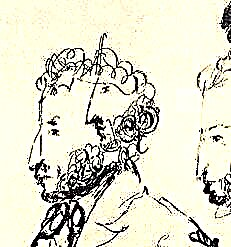 Nikolai Gogol - Outline profile of Pushkin (1837). Two sketches made with ink, pen and pencil on paper. In Nikolai Vasilievich, the poet is depicted with a large nose with a hump and a mustache, and resembles more of the Ukrainian writer than his sitter.
Nikolai Gogol - Outline profile of Pushkin (1837). Two sketches made with ink, pen and pencil on paper. In Nikolai Vasilievich, the poet is depicted with a large nose with a hump and a mustache, and resembles more of the Ukrainian writer than his sitter.Ivan Aivazovsky, Ilya Repin - Pushkin's farewell to the sea (1887). The canvas was created by the joint efforts of Aivazovsky and Repin. Ivan Konstantinovich knew his weaknesses in painting, so he turned to Repin. Ilya Efimovich painted the figure of the great poet, and the background belongs to Aivazovsky’s brush. Repin in the course of painstaking work asked many people about body movements, the camp of the creator. He later said: "Aivazovsky created the marvelous sea ... And I was honored to paint a figure there." The separation of the poet from the sea is caused by the need to leave Odessa in another punishment. The canvas was painted on the fiftieth anniversary of the death of Alexander Sergeyevich.
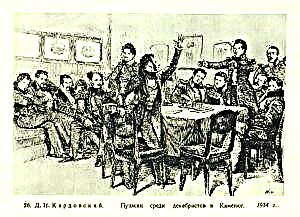 Dmitry Kardovsky - Pushkin among the Decembrists in Kamenka (1934). Alexander Sergeyevich stayed in Kamenka from November 1820 to March 1821, in November 1822. There was the estate of Vasily Davydov, a representative of the South-West Decembrist society. One of such meetings in 1934 was depicted by a graphic artist, professor, honored worker of the RSFSR Dmitry Kardovsky, he also created illustrations for Chekhov's “Kashtanka”, Griboedov’s “Woe from Wit” and other literary works. He also created scenery for performances based on Ostrovsky’s plays “Forest” (1921), “Poverty is not a vice” (1924).
Dmitry Kardovsky - Pushkin among the Decembrists in Kamenka (1934). Alexander Sergeyevich stayed in Kamenka from November 1820 to March 1821, in November 1822. There was the estate of Vasily Davydov, a representative of the South-West Decembrist society. One of such meetings in 1934 was depicted by a graphic artist, professor, honored worker of the RSFSR Dmitry Kardovsky, he also created illustrations for Chekhov's “Kashtanka”, Griboedov’s “Woe from Wit” and other literary works. He also created scenery for performances based on Ostrovsky’s plays “Forest” (1921), “Poverty is not a vice” (1924).
Thus, the image of Pushkin in painting was reproduced by artists of different eras in completely different ways. Contemporaries of the poet emphasized the romantic, pensive and freedom-loving nature of the creator, so his portraits radiate independence, sublimity, a swift flight of daring thoughts. And artists who did not find the poet alive, think out the context and immerse their hero in the whole story. So, the image of Alexander Sergeyevich is associated with a protest against social injustice: either he becomes a victim of exile, saying goodbye to the sea, then he completely turns into the central figure of the Decembrist uprising. The painters of later periods are not so much interested in the creator himself, as in his rich biography, which everyone interprets and reveals in his own way, in order to give relevance to his hero.

 Xavier de Mestre - «Pushkin is a child ”(1801-1802). The Count and artist Francois Xavier de Mestre taught the poet's older sister, Olga, for some period of time. He is the author of a miniature painted in oil on a metal plate. The image was very lively. The exact date of creation is unknown. It is assumed that this is the first image of Alexander Sergeyevich. For a long time, there was debate about who is still depicted in miniature and who is the author. For more than 100 years it was kept by the family of a friend and doctor Pushkin, the Greater Poland, and from 1950 to 1961, he was the performer of the role of pita in the production of "Pushkin" by Andrey Globa, Vsevolod Yakut.
Xavier de Mestre - «Pushkin is a child ”(1801-1802). The Count and artist Francois Xavier de Mestre taught the poet's older sister, Olga, for some period of time. He is the author of a miniature painted in oil on a metal plate. The image was very lively. The exact date of creation is unknown. It is assumed that this is the first image of Alexander Sergeyevich. For a long time, there was debate about who is still depicted in miniature and who is the author. For more than 100 years it was kept by the family of a friend and doctor Pushkin, the Greater Poland, and from 1950 to 1961, he was the performer of the role of pita in the production of "Pushkin" by Andrey Globa, Vsevolod Yakut. Vasily Tropinin - Portrait of A.S. Pushkin (1827). One of the most famous portraits of the poet. He personally ordered the image of Tropinin as a gift to friends. Alexander Sergeyevich is depicted with a slightly disheveled haircut, in a dressing gown, blanche shirt, a resin shawl slid around the circumference of the collar. This portrait is made in the spirit of romanticism, that is how fashionable young people of that time wanted to appear before their descendants.
Vasily Tropinin - Portrait of A.S. Pushkin (1827). One of the most famous portraits of the poet. He personally ordered the image of Tropinin as a gift to friends. Alexander Sergeyevich is depicted with a slightly disheveled haircut, in a dressing gown, blanche shirt, a resin shawl slid around the circumference of the collar. This portrait is made in the spirit of romanticism, that is how fashionable young people of that time wanted to appear before their descendants. Nikolai Gogol - Outline profile of Pushkin (1837). Two sketches made with ink, pen and pencil on paper. In Nikolai Vasilievich, the poet is depicted with a large nose with a hump and a mustache, and resembles more of the Ukrainian writer than his sitter.
Nikolai Gogol - Outline profile of Pushkin (1837). Two sketches made with ink, pen and pencil on paper. In Nikolai Vasilievich, the poet is depicted with a large nose with a hump and a mustache, and resembles more of the Ukrainian writer than his sitter. Dmitry Kardovsky - Pushkin among the Decembrists in Kamenka (1934). Alexander Sergeyevich stayed in Kamenka from November 1820 to March 1821, in November 1822. There was the estate of Vasily Davydov, a representative of the South-West Decembrist society. One of such meetings in 1934 was depicted by a graphic artist, professor, honored worker of the RSFSR Dmitry Kardovsky, he also created illustrations for Chekhov's “Kashtanka”, Griboedov’s “Woe from Wit” and other literary works. He also created scenery for performances based on Ostrovsky’s plays “Forest” (1921), “Poverty is not a vice” (1924).
Dmitry Kardovsky - Pushkin among the Decembrists in Kamenka (1934). Alexander Sergeyevich stayed in Kamenka from November 1820 to March 1821, in November 1822. There was the estate of Vasily Davydov, a representative of the South-West Decembrist society. One of such meetings in 1934 was depicted by a graphic artist, professor, honored worker of the RSFSR Dmitry Kardovsky, he also created illustrations for Chekhov's “Kashtanka”, Griboedov’s “Woe from Wit” and other literary works. He also created scenery for performances based on Ostrovsky’s plays “Forest” (1921), “Poverty is not a vice” (1924).
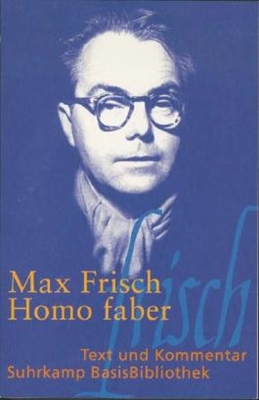
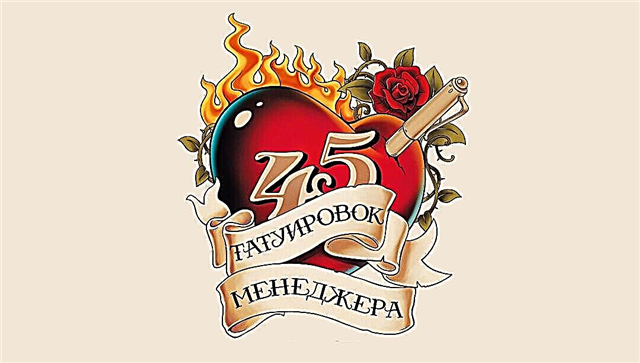 45 manager tattoos
45 manager tattoos